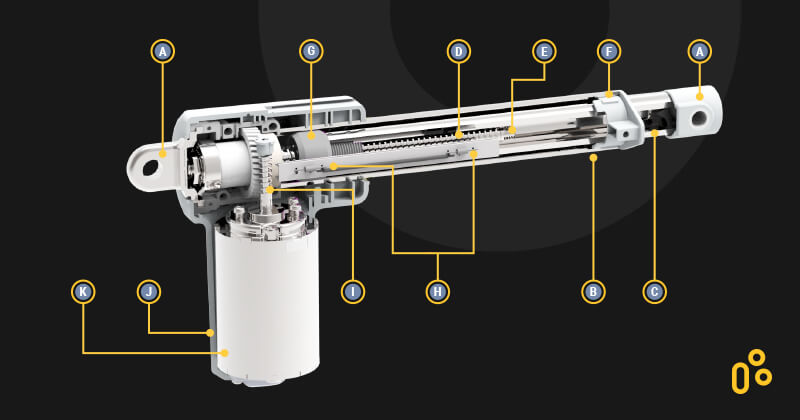Unveiling the Power of Linear Electric Actuators: Revolutionizing Automation
In the realm of automation and robotics, the linear electric actuator stands tall as a quintessential component, powering a multitude of mechanisms with precision and efficiency. From industrial machinery to everyday devices, the linear electric actuator plays a pivotal role in driving linear motion with electrifying precision. In this comprehensive guide, we delve deep into the world of linear electric actuators, exploring their functionality, applications, and the transformative impact they have on various industries.
Understanding Linear Electric Actuators: A Primer
Linear electric actuators serve as electromechanical devices designed to convert electrical energy into linear motion. Unlike their counterparts, such as hydraulic or pneumatic actuators, linear electric actuators operate solely on electrical power, making them cleaner, quieter, and more precise alternatives in many applications.
How Do Linear Electric Actuators Work?
At the heart of a linear electric actuator lies a simple yet ingenious mechanism. Typically, it comprises a motor, a lead screw, and a nut. The motor, usually an electric stepper or servo motor, generates rotational motion. This rotational motion is then translated into linear motion through the lead screw and nut mechanism.
As the motor rotates, it drives the lead screw to either extend or retract. The nut, which is threaded onto the lead screw, moves along the screw’s axis, resulting in linear displacement. By controlling the motor’s speed and direction, precise control over the actuator’s movement is achieved.
Also Read Here: Unveiling Amazon’s AMS48K Revolutionizing Data Storage
Applications of Linear Electric Actuators
The versatility of linear electric actuators finds applications across a wide spectrum of industries and domains. Let’s explore some of the primary areas where these actuators are making a significant impact:
Industrial Automation: In the realm of industrial automation, linear electric actuators drive the precise movement of robotic arms, conveyor belts, and assembly lines. Their ability to deliver consistent and repeatable motion makes them invaluable in streamlining manufacturing processes and enhancing productivity.
Medical Devices: Linear electric actuators play a crucial role in various medical devices, such as MRI machines, surgical robots, and patient beds. Their silent operation, compact size, and precise motion control make them ideal for applications where accuracy and reliability are paramount.
Aerospace and Defense: The aerospace and defense industries leverage linear electric actuators in a myriad of applications, including aircraft wing flaps, missile guidance systems, and unmanned aerial vehicles (UAVs). Their lightweight construction and high reliability make them well-suited for aerospace environments.
Home Automation: In the realm of home automation, linear electric actuators find their way into smart furniture, automated window blinds, and adjustable beds. With the rise of IoT (Internet of Things) technology, these actuators are becoming increasingly integrated into smart home systems, offering users greater control and convenience.
Challenges and Future Developments
While linear electric actuators offer numerous benefits, they also pose certain challenges. One such challenge is the need for precise control algorithms to ensure accurate positioning and movement. Additionally, factors such as mechanical wear and tear and environmental conditions can affect the long-term reliability of these actuators.
Looking ahead, advancements in materials science, sensor technology, and control algorithms hold the promise of overcoming these challenges. Innovations such as self-monitoring actuators and predictive maintenance algorithms are poised to enhance the reliability and efficiency of linear electric actuators in the years to come.
Conclusion
In conclusion, the linear electric actuator stands as a cornerstone of modern automation, driving linear motion with unparalleled precision and efficiency. From industrial robots to medical devices and beyond, these actuators continue to revolutionize the way we interact with machines and devices.
As technology advances and new challenges emerge, the role of linear electric actuators will only continue to expand. With their versatility, reliability, and precision, these actuators are poised to shape the future of automation and robotics, ushering in a new era of innovation and progress.

